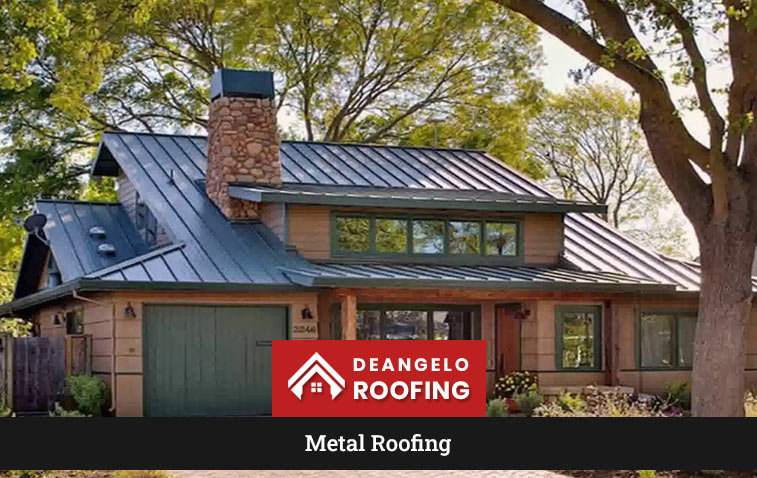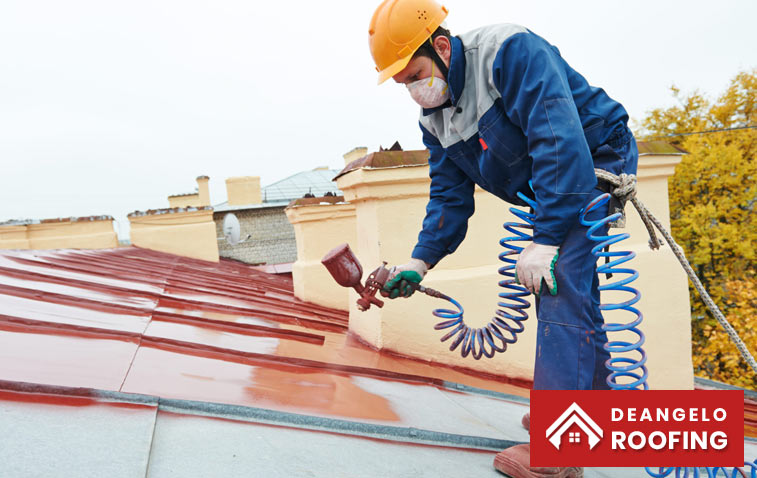Metal Roofing: Types, Benefits, and Installation
Metal roofing is increasingly favored in Los Angeles and Southern California for its exceptional durability and energy efficiency. These roofs are designed to withstand harsh weather conditions, providing robust protection against elements like sun, rain, and wind. Metal roofs are not only long-lasting but also contribute to energy savings by reflecting sunlight and reducing heat absorption.
They are a versatile choice for both residential and commercial buildings, offering various styles and materials to suit different aesthetic and performance needs. Whether you’re considering a new installation or an upgrade, metal roofing presents a reliable and efficient solution for enhancing the resilience and efficiency of your property.

Types of Metal Roofing Materials
Metal roofing is available in a variety of materials, each with its own unique properties and benefits. Some of the most common metal roofing materials include:
Steel
Steel is a popular choice for metal roofing due to its strength, durability, and cost-effectiveness. Galvanized steel is coated with zinc to prevent rust and corrosion, while Galvalume steel features a protective aluminum-zinc alloy coating for enhanced weather resistance.
Aluminum
Aluminum roofing is lightweight, resistant to corrosion, and offers excellent reflective properties, making it an energy-efficient option for Los Angeles homes and businesses. It is also available in a wide range of colors and finishes.
Copper
Copper roofing is known for its beauty, durability, and longevity. Over time, copper develops a natural patina that enhances its aesthetic appeal. While initially more expensive than other metal roofing options, copper can last for centuries with proper care and maintenance.
Zinc
Zinc roofing is an eco-friendly, low-maintenance option that offers a distinctive, natural appearance. Like copper, zinc develops a protective patina over time, contributing to its longevity and weather resistance.
Metal Roof Installation Process
Proper installation is essential for the performance and longevity of any metal roof. Following industry best practices ensures a flawless installation and optimal results.
| Step | Description |
| Roof preparation and underlayment | Inspect and repair existing roof, apply high-quality underlayment |
| Fastening systems | Use advanced clips and screws for secure attachment, allowing for thermal expansion and contraction |
| Flashing and weatherproofing | Pay close attention to flashing and weatherproofing details for a watertight seal |
| Proper installation | Ensure optimal performance, longevity, and weather resistance through expert installation by trained professionals |
Benefits of Metal Roofs
Metal roofing offers numerous benefits over traditional roofing materials:
Long lifespan (40-70 years)
Metal roofs are incredibly durable and can last between 40 and 70 years, depending on the material and coating. This longevity far surpasses that of asphalt shingles, which typically need replacement every 15-20 years.
Low maintenance requirements
Metal roofs require minimal maintenance compared to other roofing types. They are resistant to rot, insects, and other common roofing problems, and they rarely need repairs or replacements.
Fire resistance
Most metal roofing materials are non-combustible, providing excellent fire resistance. This can be especially important in areas prone to wildfires, such as some parts of Los Angeles.
Wind resistance
Metal roofs can withstand high winds, often up to 140 mph or more, without suffering damage. This wind resistance helps protect your home or business during severe weather events.
Energy efficiency
Metal roofs reflect solar heat, reducing the amount of heat absorbed by your building. This can lead to lower cooling costs and improved indoor comfort, especially during the hot Los Angeles summers.
Recyclability
Metal roofing materials are highly recyclable, making them an eco-friendly choice. When your metal roof reaches the end of its lifespan, the materials can be recycled and repurposed, reducing waste and environmental impact.
Care and Maintenance for Metal Roofs
While metal roofs require less maintenance than other roofing types, regular care can help extend their lifespan and maintain their appearance:
Regular inspections and cleaning
Periodically inspect your metal roof for signs of damage, debris buildup, or other issues. Clean your roof regularly to remove dirt, leaves, and other debris that can trap moisture and lead to corrosion.
Removing debris and preventing moss/mildew
Keep your metal roof free of debris, such as fallen branches or accumulated leaves, to prevent moisture retention and the growth of moss or mildew. Trim overhanging trees to reduce debris buildup.
Repairing scratches or damage
If you notice scratches, dents, or other damage to your metal roof, have them repaired promptly to prevent further deterioration. Our team can assess the damage and recommend the best course of action.
Recoating or refinishing options
Over time, the protective coating on your metal roof may wear down. Recoating or refinishing your roof can help restore its appearance and extend its lifespan. Our experts can guide you through the process and help you select the best coating options for your needs.
Metal Roofing vs. Other Roofing Types
When considering metal roofing for your Los Angeles property, it’s important to compare it to other common roofing types:
Metal Roofing vs. Asphalt Shingles
Asphalt shingles offer a lower initial cost but have a shorter lifespan and higher maintenance needs compared to metal roofs. Metal roofing outperforms asphalt in energy efficiency and is more resistant to fire and wind damage.
Metal Roofing vs. Tiles
Tile roofs provide durability and a unique aesthetic but are heavier and more costly than metal roofs. They are also more susceptible to cracking and damage from impact or foot traffic, making metal roofing a more practical option in some cases.
Metal Roofing vs. Slate
Slate roofing is known for its longevity and classic appearance but comes at a significantly higher price than metal roofing. Additionally, slate’s weight may necessitate extra structural support, whereas metal roofs are lighter and easier to install.
Pros of metal roofs:
- Long Lifespan: Metal roofs can last 40-70 years, far exceeding the lifespan of many other roofing materials.
- Low Maintenance: They require minimal upkeep compared to other roofing types.
- Energy Efficiency: Metal roofs reflect sunlight, reducing cooling costs and enhancing energy efficiency.
- Fire and Wind Resistance: Metal roofs are highly resistant to fire and can withstand strong winds.
- Lightweight and Recyclable: They are lighter than many roofing materials and fully recyclable at the end of their life.
Cons of metal roofs:
- Higher Upfront Cost: Metal roofs typically have a higher initial cost compared to asphalt shingles.
- Noise: They can be noisier during heavy rain or hail, though this can be mitigated with proper insulation.
- Potential Denting: Large hail or falling branches may cause dents, though they are generally durable.
- Specialized Installation: Proper installation requires expertise, which can affect overall costs.
Conclusion
Metal roofing offers numerous benefits for Los Angeles homes and businesses, including durability, energy efficiency, and low maintenance requirements. By working with our experienced team, you can select the best metal roofing materials, colors, and styles to suit your specific needs and enjoy a long-lasting, high-performance roof that enhances the value and protection of your property.
At Deangelo Roofing, we specialize in metal roofing solutions tailored to the unique needs of the Los Angeles area. Our experienced team provides expert installation, repair, and maintenance, ensuring your metal roof performs at its best for years to come.

